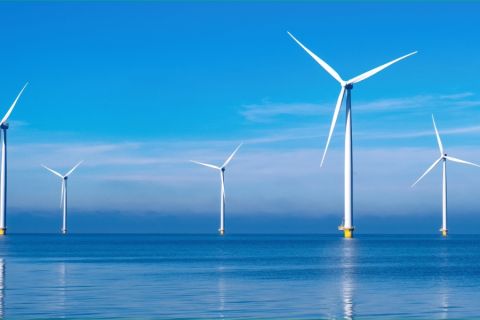As instances of stress corrosion cracking persist, the established Electromagnetic Acoustic Transducers (EMAT) system is still the preferred pipeline inspection technology.
The EMAT essentially generates an ultrasonic pulse into the test subject indicating, or not, an occurrence of cracks or coating disbondment. Although the crack and coating detection technology has been around since the early 2000s, companies like The Williams Cos. Inc. are still seeing the system emerge and transcend.
Tulsa, Okla.-based Williams ranks No. 6 on this publication’s Midstream 50 list.
“EMAT technology is not new technology, however what’s really changing right now is the wide acceptance and application to pipeline infrastructure, and being able to use the highest and best technology to find those things that are hidden and difficult to locate before they rear their head and become an incident,” Amy Shank, Williams’ director of pipeline safety and asset integrity, told attendees at Hart Energy’s recent DUG Midcontinent conference.
Shank said that through the EMAT system, Williams has been able to tackle stress corrosion cracking, cut costs, optimize usage and safety of personnel, and assess the productivity of its 33,000 miles of pipeline across all its hubs in the U.S.
“With this technology we’re able to get a lot more information that we then can apply to the rest of our pipeline systems, it better tells us where to go look and it is giving us data that is making us safer every single day out there because we know exactly where these features are [located],” she added.
The analytics drawn from EMAT also give live data comparison and offer warnings for critical spots and potential failures, which she said is crucial for anyone on the integrity side of a company.
“It’s really hard to identify all of those things that you are preventing from happening and put a price tag on it, to look at all the value you are adding, so we’re constantly having to defend and make sure we’re taking a balanced approach to looking for those things that are waiting to bite you vs. accepting the appropriate level of risks,” she added.
Furthermore, the technology still requires approval from the U.S. Pipeline and Hazardous Materials Safety Administration (PHMSA), which has had a hand in regulating and sometimes funding all advancements related to the EMAT system.
For example, PHMSA has lent financial support to Q-InLine’s recently introduced In-Line Inspection (ILI) development—an addition to the EMAT system that is expected to advance the difficult pipeline and inspection process.
Considering the tedious regulation process, Shank suggested companies that have assessed for cracking and wish to deploy the system work with companies like Williams that have already been through the trial stages.
“Let’s share lessons learned. I am a firm believer that an incident for one of us is an incident for all of us, so it behooves us to all work together and use the latest, greatest and best technology to keep us safe.”
The midstream has access to other technologies that promise to increase safety and reduce operations costs. One, Unmanned Aerial Vehicles (UAV), or drones, still comparatively new to the market, are continuing to advance in midstream sector usage.
Mike Sever, general manager at SolSpec LLC, a developer of analytic tools that process aerial imagery into information and predictive analytics, told the conference UAVs will only work and be valuable for the sector when paired with other advancements.
“At SolSpec, we believe that the advancement of UAV technology is really going to be highly dependent upon and driven on the advancement of the tools that are around it,” Sever said. “You can have aerial imagery, but what do you do with it and how is it going to best serve the midstream industry? So we believe that the analytical tools that have become available are going to lead that industry.”
Sever said there are four main categories in oil and gas that UAVs can enhance:
- Safety;
- Efficiency;
- Regulatory compliance; and
- Social equity.
Integrating the software, he said, would increase safety for personnel, field and structural operations and information gathering. Subsequently, improving safety would help efficiencies in operations as companies could better assess use of manpower and better manage the use of equipment as UAVs take on more responsibility in the field.
As more integrated UAVs are able to assess potential hazards, there will be a positive impact on regulatory monitoring and environmental concerns, Sever added. That will drive the sector forward in its contacts with landowners, communities and governments.
Through UAVs, midstream companies can draw analytics on potential hazards, erosion issues, encroachments and the overall integrity of a pipeline.
SolSpec’s programs include its Hillslope Threat Assessment Model that uses machine learning and imaging to predict the soil and land features most susceptible to landslides. With more than 1,000 previously detected landslides, the model can assess the threat level of any area on a percentile basis for 0% to 100%.
With the analytics from Hillslope Threat Assessment Model, the firm uses its Centerline Risk Assessment Model to determine the threat level to pipelines. The centerline tool maps adjacent slopes, environmentally sensitive areas and deposition off-easement to construct the percentile of threat for event response and mitigation management, according to the company.
Also included are features to detect condition and impact of landslides, storm water flow direction and accumulation, erosion conditions and sediment deposits, and change detection heat maps. Collectively, Sever said, all of these facets support pipeline integrity and environmental compliance.
Mary Holcomb can be reached at mholcomb@hartenergy.com or 713-260-6411.
Recommended Reading
US Interior Department Releases Offshore Wind Lease Schedule
2024-04-24 - The U.S. Interior Department’s schedule includes up to a dozen lease sales through 2028 for offshore wind, compared to three for oil and gas lease sales through 2029.
Utah’s Ute Tribe Demands FTC Allow XCL-Altamont Deal
2024-04-24 - More than 90% of the Utah Ute tribe’s income is from energy development on its 4.5-million-acre reservation and the tribe says XCL Resources’ bid to buy Altamont Energy shouldn’t be blocked.
Mexico Presidential Hopeful Sheinbaum Emphasizes Energy Sovereignty
2024-04-24 - Claudia Sheinbaum, vying to becoming Mexico’s next president this summer, says she isn’t in favor of an absolute privatization of the energy sector but she isn’t against private investments either.
Venture Global Gets FERC Nod to Process Gas for LNG
2024-04-23 - Venture Global’s massive export terminal will change natural gas flows across the Gulf of Mexico but its Plaquemines LNG export terminal may still be years away from delivering LNG to long-term customers.
US EPA Expected to Drop Hydrogen from Power Plant Rule, Sources Say
2024-04-22 - The move reflects skepticism within the U.S. government that the technology will develop quickly enough to become a significant tool to decarbonize the electricity industry.




